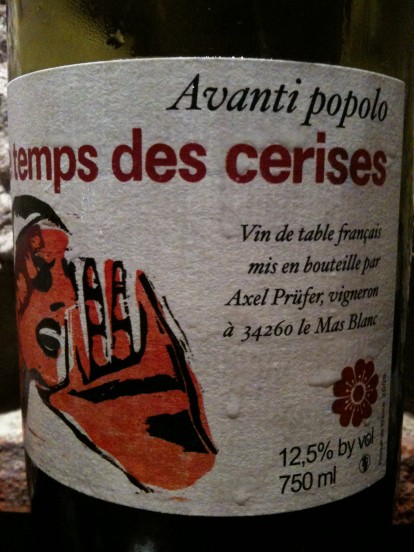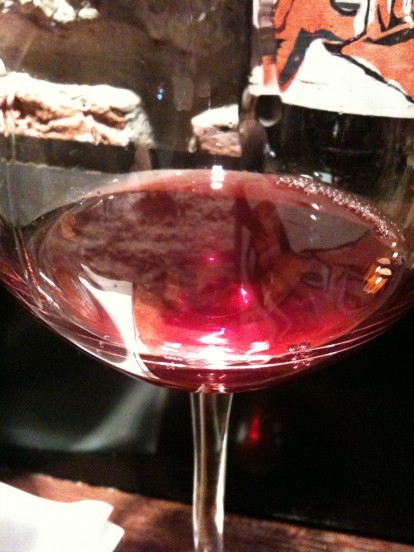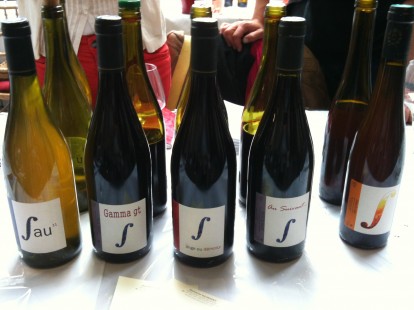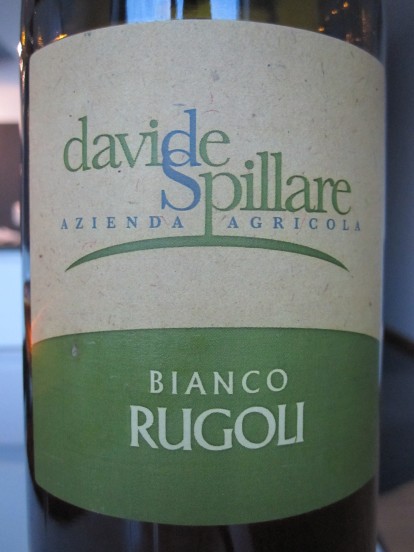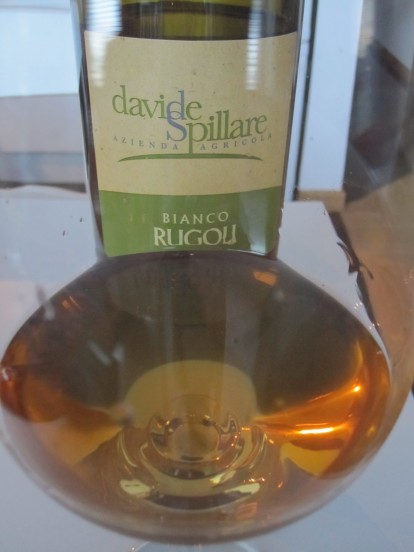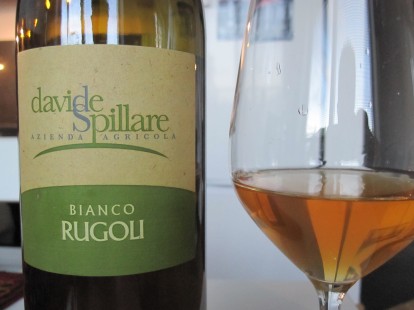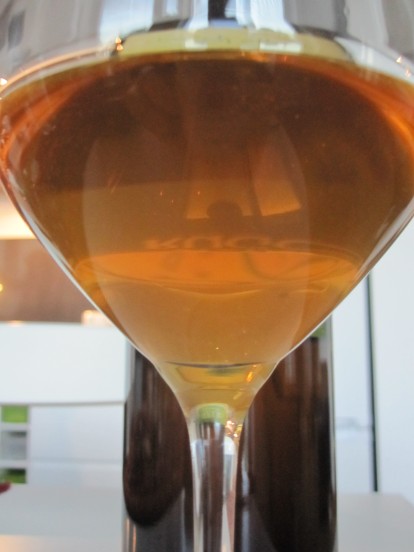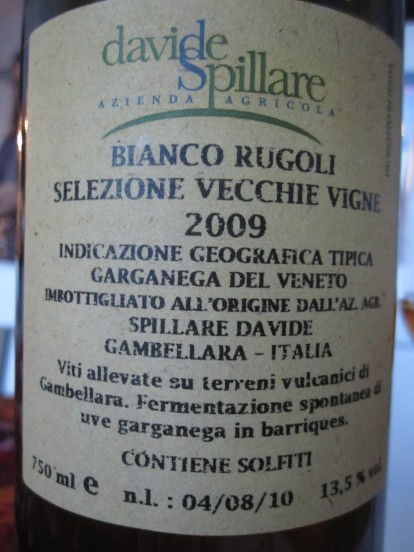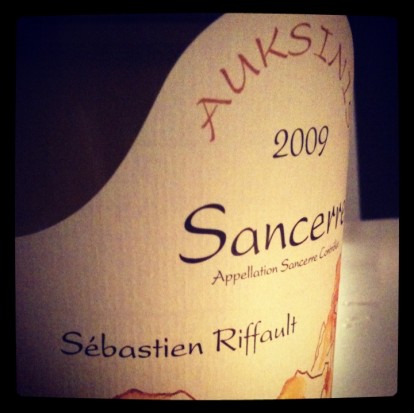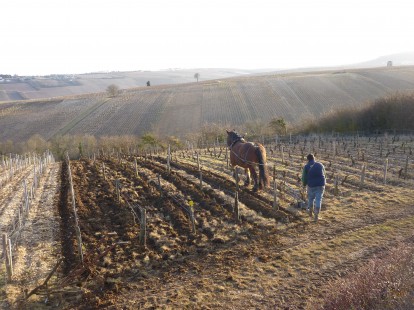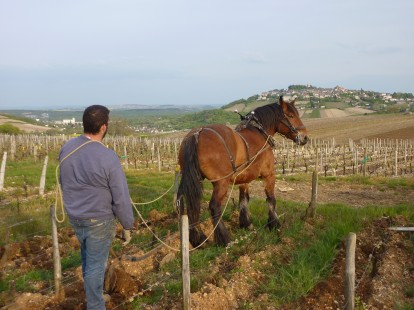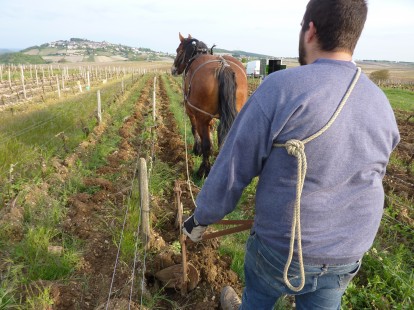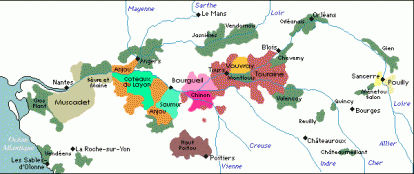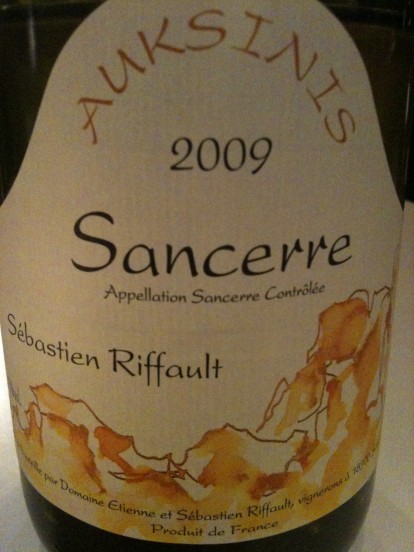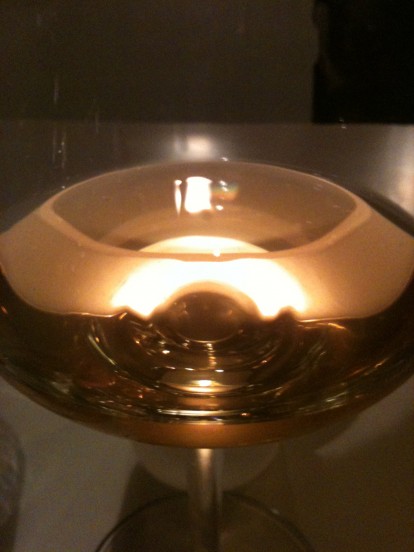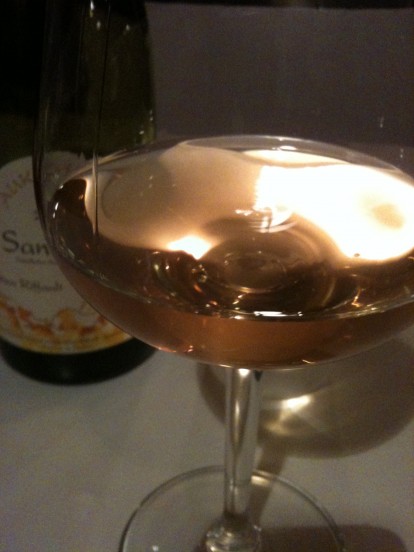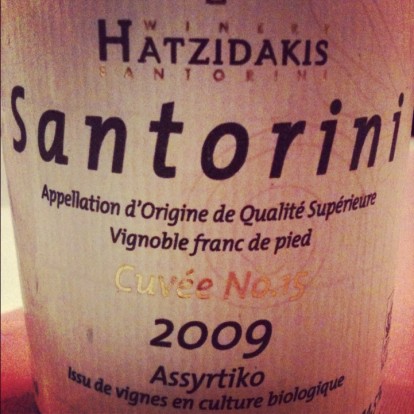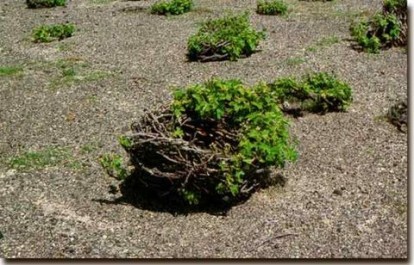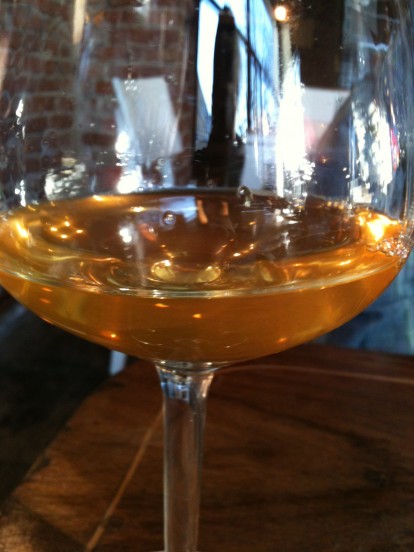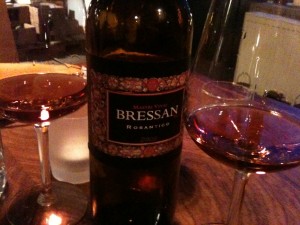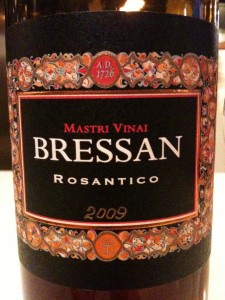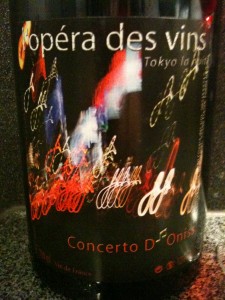Jun 2, 2012
May 31, 2012
My favorite picks from RAW and Real Wine Fairs
I have personally never seen so many great producers (I think the number is in the neighborhood of 300!) gathered together anywhere before the RAW and Real Wine Fairs May 20th-22nd in London. For this I am very grateful for all the producers (the actual producers in most cases, not suited-up reps) that came over to participate in these fairs. Producers from all parts of Europe, Georgia, Australia, South Africa and even the US. Most of all I would like to thank Isabelle Legeron and Doug Wregg for organizing these two events, focusing on hands-on producers who practice minimal to no intervention viticulture and wine making.
Here are some producers that sent me home thinking and craving their wines:
Domaine Saurigny (Anjou, Loire Valley) – Jérôme Saurigny makes a Sauvignon Blanc that I have to say really left me impressed. I first met Jérôme and tasted his wines at his place in Anjou about 3 years ago, but I swear I can’t remember how really good his Sauvignon Blanc was. It is my favorite Sauvignon Blanc to date, so refreshing and showing none of the characteristics that often come associated with the grape and which I dislike. His reds were also outstanding and his “accidental” sweet chenin blanc is also worth tasting!
May 17, 2012
A tasting note: 2009 Davide Spillare Bianco Rugoli Selezione Vecchie Vigne
You might remember my brief mention of Davide Spillare in my VinNatur 2011 – producers to keep on eye on, blog entry. Davide’s Azienda Agricola covers about 2 ha in Gambellara, in the province of Vicenza. Davide works naturally both in the vineyards and in the winery, being shown the way by his teacher and mentor, Angiolino Maule. He works mainly with the indigenous Garganega grape, and ferments all of his wines spontaneously without any additions, except a little sulfur in his whites.
The Bianco Rugoli is made up of 90% Garganega (grown on volcanic soil) and 10% Trebbiano. After manual harvest and crush, maceration with the skins lasts 18-24 hours giving this wine it’s gorgeous glow. It is then pressed and transferred to used barriques for about 10 months for fermentation. It then spends some time in steel and is bottled without fining or filtering with just a bit of sulfur.
Date tasted: May 17th, 20:00
Appearance: honey-toned orange
Nose: slightly jammy orange peel with hints of brown honey. very clear high intensity fruit. Some hints of herbs like sage and thyme. There are some aromas that could only be described as roasted lamb w rosemary. Ripe golden gooseberries. alcohol shows on the nose. With 15 minutes in the glass, a smoky minerality begins to emerge blending nicely with the fruit. Showing also some hints of very ripe fruit, perhaps some grapes being overripe – in a good way.
Palate: spicy, fruity and dry on the palate with good acid and tingling alcohol, which begins to integrate as the wine warms. Very mild tannins with a slight bitter aftertaste. As time passes, the wine seems to become increasingly refreshing, even though the alcohol is my only lament, as it very slightly stings the tongue. Not enough to put the wine way out of balance, however. Young..
Apr 26, 2012
structure
Last night for my birthday, I celebrated with friends and a magnum of one of my favorite wines – Jean Pierre Robinot’s Concerto d’Oniss 2010. I am always so impressed by the structure of his wines. His wines have what I consider about the greatest structure I have seen. I am not talking massive structure and alcohol that make a wine difficult to consume an entire bottle of, I am talking a structure that even at only 12% alcohol, has no peers. It pours like oil, and in the mouth that oily texture is there as well.
Pink grapefruit and grapefruit skin (the white part under the skin actually) are the first aromas you get, followed by delicate notes of incense, pepper and spice.
The texture is surreal on the palate, it’s the first thing that you notice. Like a light oil, so balanced, alcohol barely noticeable. Grapefruit, spices and red berries. A wine to glug, glug, glug!
Pay close attention to the way this wine pours, especially as it fills the glass!
Jean Pierre Robinot Concerto d’Oniss Magnum – structure from vinosseur on Vimeo.
Apr 24, 2012
No cat piss, please
The Sauvignon Blanc grape is quite easy to detect on the nose, very often showing aromas of green gooseberries, blackcurrant leaves and hints of what we call “cat piss”. In other words, to some (including myself) the wines made with this popular grape can often be quite stinky and smell “green ” and under ripe (not all of course, but many).
But, what happens when you take a Sauvignon Blanc vineyard in Sancerre that is farmed naturally (without pesticides, herbicides or fertilizers), where the juice is made into wine without a single additive, including SO2? The result is a Sebastién Riffault Sancerre Auksinis, a very different Sancerre.
Sebastién is a 30 year-old who is passionate about the work he and his horse do in the vineyards, paying careful attention to the needs of the vines without introducing them to any additives including fertilizers.
His approach is organic with some biodynamic principals. He plows with his horse, but only every third year or so because he considers the upheaval of the topsoil to be to some extent harmful for the vineyard and its harmonious life.* He harvests late and with very low yields and allows his wines to ferment naturally with ambient yeasts in large old barrels with a full malolactic conversion.
The 40 year old Auksinis vineyard is located in Verdigny in the Sancerre appellation of the Loire Valley, about 5 km NW from the town of Sancerre.
(Terroir France – French Wine Guide)
The 1 HA vineyard is facing South East & South with an average slope of about 35%. The soil is mostly clay and limestone (Caillottes). The vineyard produces 15 hl/ha, or about 2000 bottles of this wine. Fermented in 8-15 year-old large wooden barrels for about 3 months, then left on the fine lees for about two years. Racking and bottling is done by gravity without fining or filtration. The whole process from start to end is done without any additions, including SO2. Vintage 2009
Date tasted: Monday April 23rd, 20:00
Apr 19, 2012
Blind taste that wine again please
I recently had a guest at Jacob’s Bar & Kjøkken. This guest was somewhat of a wine person. This means for the sake of this story that this guest was very wine interested and belonged to a sophisticated wine-tasting group that regularly meets and tastes some pretty darn good, and valuable, wines. They do this in the comfort of their home(s) and are not often seen out and about at the well-known wine spots in the city.
I poured a small taste of something, blind. I had never met this guest, and I am always interested to hear their analysis because it helps me to gauge their knowledge and palate. I returned after a few minutes to hear this guest’s impressions about the splash of wine I had poured. This is always interesting for me, especially with “knowledgeable” people. After the analysis, I poured another small glass… and then another, and then another. One thing struck me about this guest’s comments. On each and every wine, the comment “well, the wine has these balsamic notes, so I assume it’s natural. And these balsamic notes cover the fruit, so it’s very difficult to get the fruit, and therefore analyze the wine correctly to come to any kind of conclusion. ” Of course he knew where he was and also knew the wines would be natural, so no points there.
No, it wasn’t the first time (and it won’t be the last) that I heard such comments. I often hear that it is hard to blind taste natural wines cause they all kind of smell and taste the same. Remember when you first started to taste wines and try to distinguish the difference? They pretty much all tasted similar, right? Until 100’s of wines later, you started to get it…
IMHO, blind tasting natural wines is all about retraining the senses and the brain. Those of us who have studied wine or have been tasting it for years, were very likely taught to blind taste “conventional wines”. I am not making a judgement here about the quality of these wines, just an observation, and actually a fact when it came to my education. And, just like having to train that brain to blind taste that first time, you have to do it again. With some training, you can also begin to blind taste (correctly I might add) natural wines, as I often do.
So, when you are starting to blind taste natural wines, please give it some time and stop saying that you are not able to because it’s natural and it smell like the others. This is nonsense and you know it.
Apr 12, 2012
A tasting note: 2009 Hatzidakis Assyrtiko Cuvée No.15
I wanna start off by saying that I am no Greek geek, that is, i know very little about Greece and it’s viticulture and wines. In fact, I have never even been to Greece and the number of times I can remember tasting a Greek wine can be counted on less than the 10 fingers of my two hands, and maybe even on less than 5 fingers. This isn’t because I have chosen not to taste the wines of Greece, it is merely due to the fact that in Norway, fewer than 10 examples are available (that i am aware of). Now that i am in Krakow, it seems that Greece may get a little more attention from me, or at least the wines of Hatzidakis.
Haridimos Hatzidakis founded the winery on the island of Santorini in 1996 and made his first wine in the following year. He has been organic right from the start, no doubt helped by the heat and the winds of the island. A unique bush training system (koulara) is used on Santorini to help protect the growing grapes from the fierce winds and heat that are native here. The vines are woven into “baskets” with the grapes facing towards the inside, thus providing shelter. Fortunately, Santorini is immune to phylloxera due to it’s volcanic soils which contain no clay, which is necessary for the parasite to survive. Therefore, many of the vine roots growing on Santorini are 100’s of years old, allowing them to grow deep into the soils where they can find nutrients and water.
The Assyrtiko Cuvée no. 15 is 100% Assyrtiko, an indigenous grape of Greece, and is known for it’s minerality and acidity (even if the grape is very ripe). The wine is made from a mixture of (very) old and young vines, where the upper part of the vine is about 15 years old, but the underground root system can be anywhere between 100-400 years of age. The grape skins are quickly separated from the juice and the wine is allowed to ferment with its native yeasts. It’s then matured on the lees in tank for 4 months. Very little SO2 is added, with the total at bottling being between 12 & 20 mg/l. This wine is quite rare and is not made in every vintage. In 2009, about 200 cases were made.
Date tasted: March 25th, 2012 (and another bottle a few days later)
Appearance: Deep yellow hay-like color. Very vibrant and a bit turbid.
Nose: like crushed vitamin c, or aspirin. Under ripe mango, but not green. Honey and mineral notes lift the wine nicely.
Palate: Mineral and very salty. Under ripe mango again on the palate with a slight bitter after-taste. An extremely long finish and very concentrated. Alcohol sticks a bit, but i credit this to the wine’s youth.
If all Greek wines tasted like this, than I have been missing out. But I know that they don’t and that this is something special because the few Greek wines I have tasted were nothing like this. A wine to enjoy today or store (but why do that)
* I would like to thank Tomasz Kurzeja and Konstantinos Lazarakis MW for their very helpful information.
*This post was written especially for Winicjatywa and translated to Polish language here
Mar 27, 2012
Rosantico
The Moscato Rosa vine has an ancient history dating back to the Austro-Hungarian Empire here in Friuli, hence the clever name on the label. Fulvio Bressan’s family have always had this small (1 HA) vineyard, and Fulvio’s father used to make a sweet wine from the vine, the traditional vinification method for this grape. A rather rich history for this rather difficult little vineyard.
The vineyard had an extremely low yield of about 1500 liters in 2009 for the 1 HA, that’s about 2000 bottles. And that was in a good year. Bressan picks the grapes late to insure ripeness, which is tricky since this grape has a high level of “colatura” or risk of falling off the vine when ripe. But still he waits to pick the grapes late so that they are dry like sultana’s, adding to the risk that botrytis cinerea (noble rot) will set in, which is not desired here. Add these risks together and you have the elements of total vintage loss, which is what happened in the previous 7 vintages! Also no wine was made in 2010 and the 2011 is still in tank fermenting
After the manual harvest, the grapes were pressed and de-stalked. Maceration was for 3 days, fermentation was spontaneous thanks to the ambient yeasts present on the bunches. Alcoholic fermentation lasted for about 4 weeks, followed by an induced (by a small increase in temperature) malolactic fermentation. The wine was then racked and left on the fine lees in stainless steel for two years, giving the grape the chance to show its elegance and personality. The wine was then bottled without filtration. The wine then continued for a bit longer for some bottle maturation. Total alcohol is 13.20% and total acidity is a fresh 6,38 g/l.
Click here for some nerdy information for those who care.
Date tasted: March 3rd, 2012 18:30
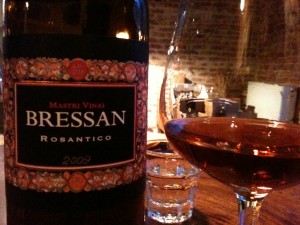 Appearance: Normally I would say “see the photos”, but since the photos i took were in a dimly-lit place, I will try and describe the color. It has more of a light-reddish-copperish color, than of a pure rosé like we might see from southern France. Like a pure extraction of fruit juice. Intriguing for sure. See photo 😉
Appearance: Normally I would say “see the photos”, but since the photos i took were in a dimly-lit place, I will try and describe the color. It has more of a light-reddish-copperish color, than of a pure rosé like we might see from southern France. Like a pure extraction of fruit juice. Intriguing for sure. See photo 😉
Nose: Wild fruits (berries) and rose pedals, very intense. Hints of floral soap, yes soap.
Palate: Dry. Important to emphasize dry, as in none or very little residual sugar. Texture of a liquor, with the alcohol a bit noticeable but not enough to throw the wine out of balance. I think this aspect of the wine will integrate nicely in the coming years adding to its complexity. Super length and acidity giving this syrupy wine lots of freshness. Really very liquor-like in the texture. Like a syrup made of fresh berries. The after taste had mild yeasty hints, which I liked.
Although enjoyable now, will be enjoyable for years to come for sure. Goodbye today’s rosé and hello rosé for tomorrow!
Mar 6, 2012
Prosciutto, Parmigiano & Sparkling Reds
Here is a re-post of my original story which appeared on March 5, 2012 on the innovative new Polish wine site Winicjatywa. I will be contributing my thoughts there on a regular basis. If you are Polish reader of my blog, you can click here to read the Polish language version of this story.
I grew up in California, but spent almost every summer with my grandparents in Bologna, Italy. Therefore it wasn’t strange to me when back in 2006 Non Dos, the same guys that introduced me to the wines of Frank Cornelissen, also brought in a bottle of Camillo Donati’s Lambrusco; a traditional red sparkling wine made from the Lambrusco grape from the Emilia Romagna region in Italy.
Feb 27, 2012
A tasting note: 2009 Jean-Pierre Robinot Concerto d'Oniss
Of the many many many wines I have tasted over the years, Jean-Pierre produces some of the most vinous wines I have ever had the satisfaction of tasting. So, to summarize even before I begin this tasting note, this wine is super-vinous. What do I mean by that? When you pour the wine, there are two things you notice right away: the beautiful light pomegranate color and the way the wine pours from the bottle. It pours like you are pouring a light oil. Even when you swirl the glass, it seems as though you have a glass of pomegranate-colored oil. It appears thicker than other wines. And nothing has been added to this wine to make it this way. It’s just great quality grapes that have been squeezed just right. So, why this oily appearance and texture? That my friend is what we call structure and concentration that you can not only see, but that you can taste.
The labels? Well, Jean-Paul has either taken the photo or painted the picture himself to create his labels. All of his labels are unique and each wine and vintage has a different label. They are as unique as his wines.The Concerto d’Oniss is his base wine and is made from 100% Pinea d’Aunis grown in the Loire Valley (mostly around Tours, Anjou & Saumur) as naturally as possible, avoiding ALL treatments to the vines. A grape dating back to the Medieval Times, not many producers grow this grape thanks to the ever-increasing demand for more well-known varieties. Thankfully, there are a small handful of producers who still work with this grape. I have tasted the wines from 4 or 5 different producers working with this grape and have noticed certain common characteristics: lightish red color, lowish alcohol, aromas and scents of grapefruit, light pepper & incense, & small red berries.
After manually harvesting these small, dark grapes, whole clusters were dropped into fiberglass tanks without any additions whatsoever, at any point. No temperature control means partial carbonic maceration for the first few days. Maceration went on for about 3 months then the wine was bottled without fining or filtering.
After tasting this wine many times and in various vintages, I’m finally writing about it.
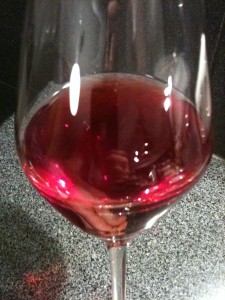 Date tasted: Sunday February 26th, 2012 18:30
Date tasted: Sunday February 26th, 2012 18:30
Appearance: viscous viscous viscous! See photo for color
Nose: grapefruit, incense, pepper, little red berries, forrest floor with some faint reductive hints. Hints of wild strawberries. Hints of cough syrup, the oily kind that leaves a slightly bitter smell and taste. Even looks like cough syrup
Palate: grapefruit, smooth tannins, but more grippy than I remember. Great acidity, but smooth and absolutely drinkable. Red cranberries. Very rustic and again the oily exture like all of his wines. Slighty metallic, which I have not found on any previous bottles. Wild strawberries, but without the sugar. Pomegranate.
There is a certain weight to this wine that I find on all of Robinot’s wine’s. They seem particularly viscous, oily and heavy, but light on their feet at the same time (strange but true). The concentration and structure of this wine, of his wines, are among the best I have tasted in the natural wine world. Texture is a bit like a dessert wine minus the sugar
Monday February 27th, 18:30
Yes, yes I did leave some in the bottle for tonight. Crazy, but I am super happy I did
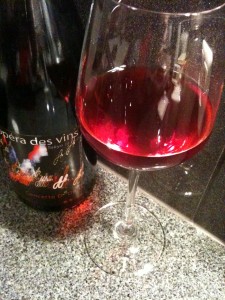 Appearance: Not much change that I could see, but perhaps a tad darker
Appearance: Not much change that I could see, but perhaps a tad darker
Nose: More aromas of incense and pepper. Deeper fruit (still red).
Palate: right when the wine hits the mouth, it’s that oily texture again. Impressive. A salty impact I didn’t get yesterday. Also a depth I didn’t get yesterday. A certain sweet aftertaste I can only compare to sour fruit that ends on a sweet note giving them that perfect balance. medium length and still as refreshing as yesterday. Softer tannins today.
I am reminded of why this has always been one of my favorite wines. it is unique, the texture is magnificent, it’s fresh, and it’s drinkable. I just noticed that nowhere in this tasting note have I mentioned the alcohol, and that is because it so not noticeable that it isn’t even an issue. At 12% you wouldn’t expect it to be, but i have tasted many wines where even low alcohol can put a wine out of balance
Some final words to summarize the wine: structure, concentration, balance, drinkablity.
